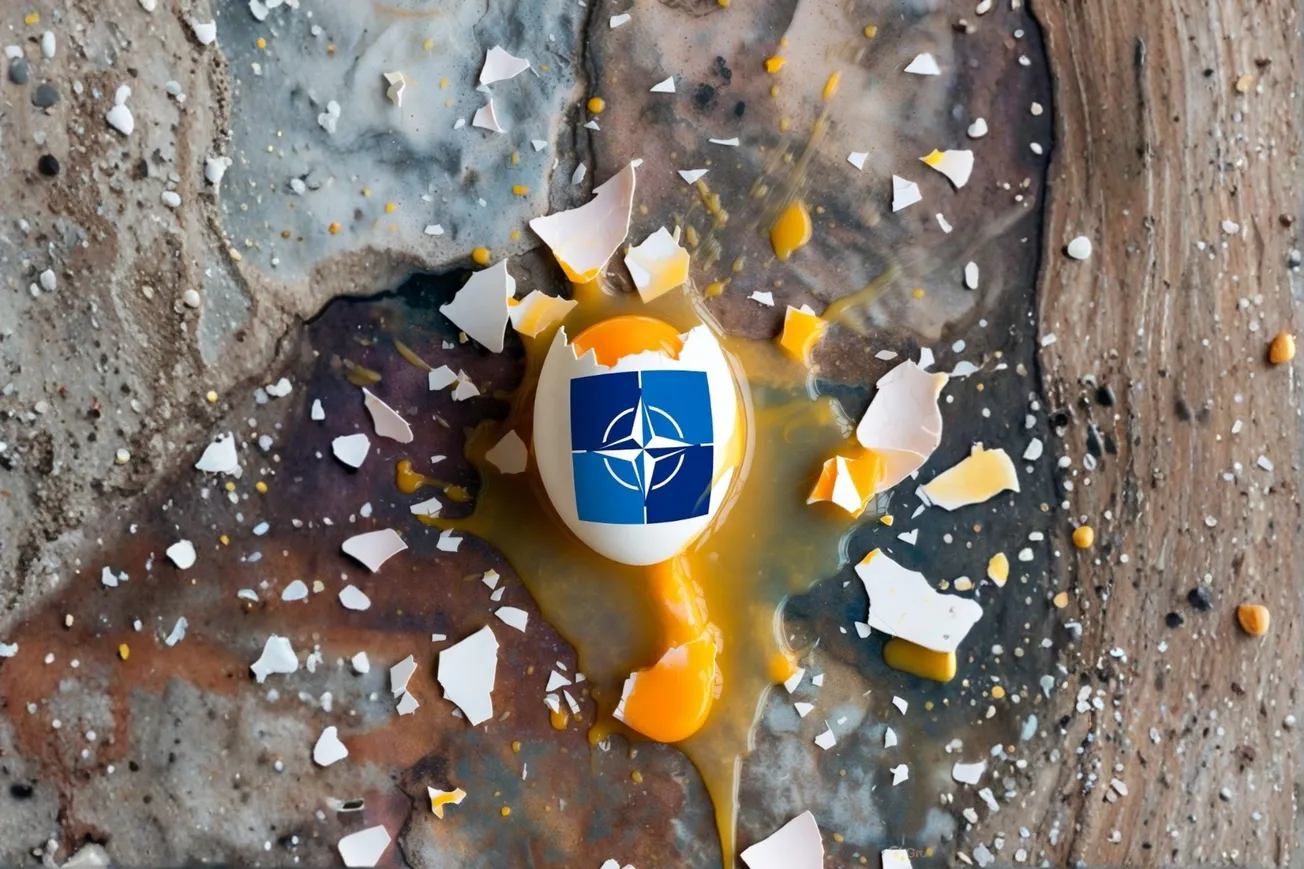The world now stands on the brink of a U.S.-Russia nuclear war being triggered not only in the Ukraine theater, but in Southwest Asia as well.
On Wednesday, Oct. 2, the Israeli cabinet met to discuss how it will retaliate against Iran’s Oct. 1 missile strikes. Later in the day, Prime Minister Benjamin Netanyahu’s office announced that he would be speaking late Wednesday with President Joe Biden, to coordinate the next steps to be taken. Earlier, U.S. National Security Adviser Jake Sullivan had warned there would be “severe consequences” for Iran and that the U.S. will “work with Israel.” “That sounds ominously like a threat of joint U.S.-Israeli military action against Iran,” possibly against Tehran’s nuclear program, Financial Times chief foreign affairs commentator Gideon Rachman reported with satisfaction.
Satisfaction, because it has been London’s “Great Game” policy for years to use Israel as a pawn to drag the United States into a shooting war against Iran, which would then send all of Southwest Asia up in flames. The resulting danger of escalation to full-scale thermonuclear conflict between the superpowers should need no elaboration: Israel is itself a nuclear power; and Iran, having joined the BRICS in 2024, is also about to sign a “Comprehensive Strategic Partnership Agreement” with Russia, approved by President Putin personally in mid-September of this year.
The British oligarchy are not subtle about their “forecast” of what they expect to happen next in Southwest Asia. The Sept. 30 The Economist reported: “After the decapitation of Hezbollah, Iran could race for a nuclear bomb.… America and Israel have long promised that Iran will not be allowed to build a bomb. Israel, in particular, appears to have detailed intelligence on the progress of Iran’s nuclear program. If it were to pick up signs that Iran was crossing a threshold, it might well attack Iranian nuclear sites.”
The Oct. 1 The Economist continued: “The Iranian strike underway … gives Israel the justification to deal with Iran’s nuclear threat.”
And the Anglophile Heritage Foundation published a report on Oct. 1 headlined “Iran Is Inching Toward a Nuclear Weapons Breakout: What Does This Mean for the United States?” which argued that “the United States must equip and empower its regional partners and allies to confront Iran … and—if necessary—develop and maintain the capabilities needed to destroy Iran’s nuclear capabilities.”
Where do such scenarios lead? To nuclear war.
A significant segment of official Washington is well aware of the fact that the current policy trajectory for Southwest Asia (not to mention Ukraine) will quickly go nuclear, if continued. The Nonproliferation Policy Education Center reported on Iran-Israel war games that they held in late 2023—with 35 participants from Republican and Democratic Hill staff; U.S. Executive Branch officials and analysts; leading academic scholars; national security and Middle Eastern think tank experts; and U.S. military personnel—which found that all of the scenarios “quickly went nuclear.”
And yet they are staying the course. In fact, the very first question asked at the Oct. 1 vice presidential debate was designed to line up both candidates behind London’s policy of orchestrating a joint U.S.-Israeli strike against Iran’s nuclear program. Neither Vance nor Walz disputed the policy.
That, however, was not the case for Helga Zepp-LaRouche’s Schiller Institute, which held an Oct. 2 international online conference with top experts from both sides of the Atlantic to discuss the topic “Another Step Closer to Nuclear Armageddon—Germany Needs a New Security Architecture.” Readers are encouraged to view the entire extraordinary proceedings and study Zepp-LaRouche’s policies and underlying principles for eliminating the war danger, not by an escalating, evermore terrifying balance of terror—as in Kissinger’s Mutually Assured Destruction (MAD) doctrine—but with a new paradigm of universal development.
In February 1982, Lyndon LaRouche addressed the insanity of the MAD doctrine in a short article titled “An End to Mutually Assured Destruction:
“So, for a quarter-century, the population of the world has lived under the perpetual terror of ever-ready intercontinental thermonuclear warfare.… The worst feature of the Kissingerian MADness doctrine is the false assumption that the foreknown consequences of thermonuclear warfare are sufficient to prevent any super power from actually launching a general thermonuclear assault. This obsession with MADness has gone so far as to foster the doctrine that Moscow would tolerate a limited, Europe-based nuclear assault on Russia itself without unleashing a general thermonuclear barrage against the mainland U.S.A.
“The consequences of thermonuclear warfare are an awesome deterrent. It is false to the point of suicidal absurdity, to assume that the deterrent effect is an absolute deterrent.… Any superpower would do so if it believed that failure to launch such a salvo meant the assured political destruction of its homeland.…
“If the government of the United States continues its adherence to the monetary policies set into motion August 1971, or worse, the Volcker monetarist policies of the present moment, most of the world is already plunging into the depths of a new general depression far deeper, more prolonged and qualitatively more devastating than the economic depression preceding the war of 1939-45.…
“Unless the United States changes drastically its present monetary and military policies, the thermonuclear catastrophe born of Kissingerian MADness threatens to become the kind of war no one wished to believe could actually happen.
“As we approach this early period of acute crisis, it is urgent that the government of the United States be prepared to proceed from both monetary policies and military policies fundamentally different from the policy-trends which have increasingly dominated our policy-making over the recent 15 years.”







